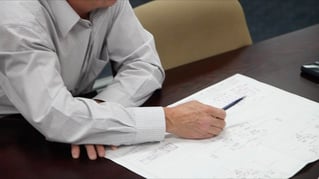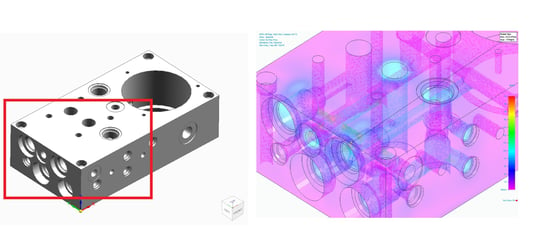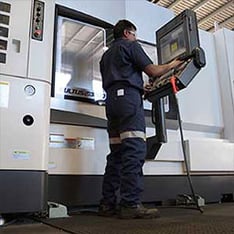A hydraulic system design project can be a daunting undertaking, especially if the stakes are high and the penalties for failure don’t bear thinking about. That’s why it’s important to follow a very methodical design, manufacturing and deployment process.
Engineering best practices evolve over many years and many projects, so adhering to strict processes ensures that nothing is left to chance. An end-to-end engineering and manufacturing process gives full control over all aspects of the production. Allowing changes to be made as technical issues become apparent. Which gives you much greater certainty of the success of your engineering project.
The end-to-end hydraulic system design process:
Initial consultation

The initial consultation is an important kickstart to your hydraulic engineering project. This will usually consist of a number of calls and or meetings between the initiators of the project (the client) and the team responsible for the design. Depending on the organisation, the process will usually begin with an initial exploratory call with a consultant. After gathering information, depending on the extent and complexity of the project and the expertise required, the design team will be assembled and a number of meetings or conference calls may be conducted.
Further research & investigation
For all but the very simple projects, the engineering team will proceed to conduct additional investigations until they are satisfied they have all the information needed to produce a successful design. In simple projects, this may be limited to reviewing sitemaps, existing system diagrams, documentation relating to the technical requirements or conducting calls with on-site engineers. In more complex or large-scale undertakings, site visits and more extensive planning may be required. Again, this depends on the nature of the application and the more specialised the engineering challenge, the more information will be required.
Proposal & scope of work .jpeg?width=321&name=Screenshot%202020-10-16%20at%2012.02.19%20(1).jpeg)
The next step is for the engineering team to go away and put together the solution. This process can take anywhere from a few weeks to a few months, depending on the complexity of the design. The proposal will include a detailed description of the proposed solution, including explanations of various design decisions. It should also include a list of required components, a schedule of work to be performed and a detailed cost breakdown.
3D modelling & reliability engineering
 Once the proposal is signed off, it is time to firm up on designs utilising the technological tools available. Most high-end design teams utilise 3D modelling software to visualise and optimise their plans to ensure they fall within design constraints. The modern engineering process also includes reliability engineering using 3D simulation software.
Once the proposal is signed off, it is time to firm up on designs utilising the technological tools available. Most high-end design teams utilise 3D modelling software to visualise and optimise their plans to ensure they fall within design constraints. The modern engineering process also includes reliability engineering using 3D simulation software.
Reliability engineering is the process of using computer models to predict how components will behave in the real world. Using sophisticated 3D software, engineers can analyse the forces involved and use accurate data to improve designs. In the hands of a skilled engineer, this software provides accurate information about how the system will perform in real life. Showing weak spots and potential high stress areas, which could contribute to wear or chance of failure. The simulation models can be changed, modified and adapted to suit the various known or anticipated operating conditions, and solutions can be optimised. This can dramatically improve the performance of systems and enhance their reliability and lower maintenance costs.
Custom Manufacturing
.jpg?width=234&name=Screen%20Shot%202019-03-13%20at%2007.43.23%20(3).jpg)

While engineers endeavour to use available components as much as possible, in most custom-designed hydraulic systems, the need for custom manufactured parts is inevitable. The end-to-end hydraulic engineering process all custom components are manufactured in-house by dedicated manufacturing facilities. These facilities feature advanced CNC milling and machining devices operated by skilled technicians who understand the principles of hydraulic engineering. Manufacturing is done using the highest quality materials as specified by the engineering team. The advantage of the end-to-end process is that the link between engineering team and manufacturing team is a strong one. Engineers are able to engage directly with technicians and identify issues with designs and make adjustments if required. Enabling agile manufacturing and ensuring a better end result.
Factory Acceptance Testing
This is a series of tests that are completed during and after assembly to ensure that the components are operating within design specifications. This will usually happen in the workshop and is often witnessed by the client before the system is shipped to site to be installed.
Commissioning
This is the final test to ensure that the installed system is operating according to the clients requirements. The last step of the project is the most important piece of the puzzle. In simple projects, this may be as simple as delivering of a unit and hooking it up. However, when systems get more complex, the installation and setup becomes much more involved. Again, this is where an end-to-end process increases the seamlessness of this step. In some cases, real world behaviours necessitate new components to be manufactured or new software routines to be written. At Berendsen, our engineers have even gone to the extent of interacting with the manufacturers of some OEM systems to rewrite the source code.



.jpeg?width=479&name=IMG_3808%20(1).jpeg)




Leave A Comment